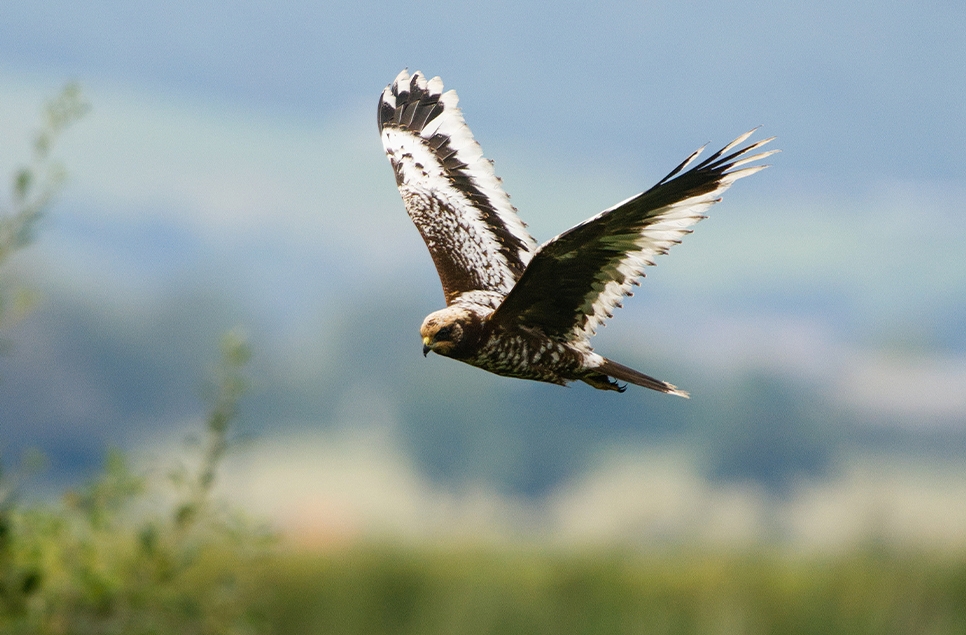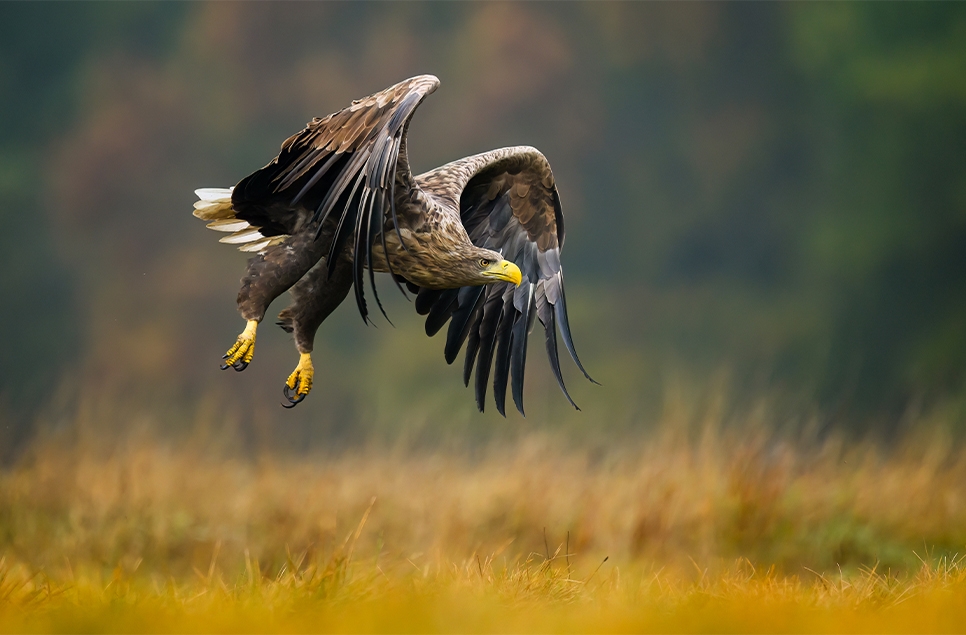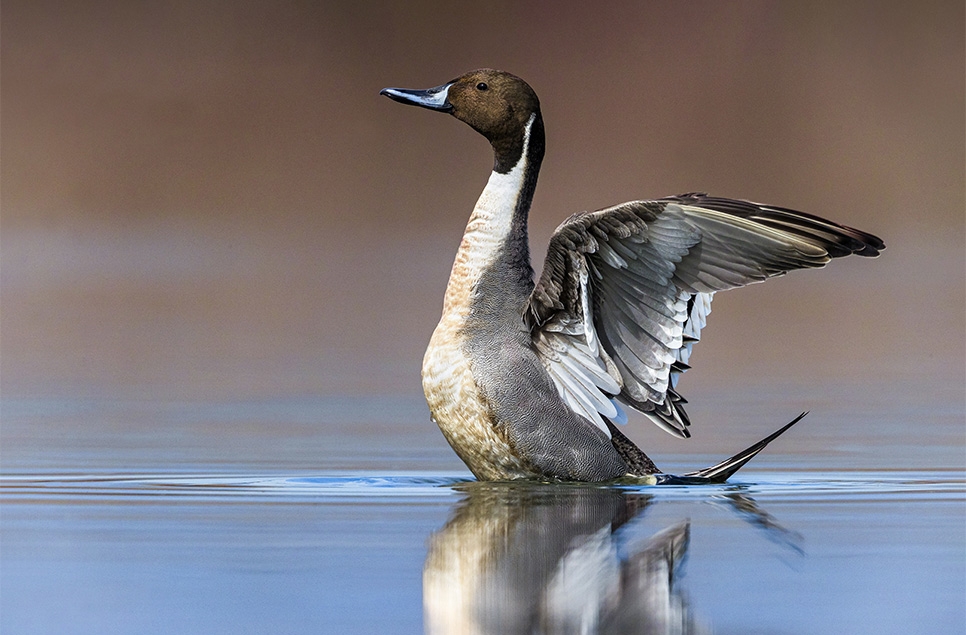Longstanding Martin Mere volunteer gives us a sneak 'beak' into his day
The volunteers are WWT’s wings. Without their 1000 volunteers, the charity’s grand ambitions would never be met.
One of their current longest serving volunteers is Dave Walsh, 73. He has been helping out at WWT’s Martin Mere in Lancashire for over 20 years.
Dave and his wife Estelle, 73, took up an interest in birds when their children flew the nest. Fascinated by migratory birds, Dave would note their movements, becoming a vital asset to the reserve. Now a whooper swan research volunteer, Dave has devoted much of his time helping to monitor the welfare of thousands of birds that spend the winter there.
Never a dull minute, here Dave shares what he’s learned over the years.
We started around 1994/5. My wife and I began coming here, after our children grew up and left the family home, to take up bird watching. I was fascinated by the migratory whooper swans. Back then, there were also Bewick’s swans as well. We started noticing that some of the birds were ringed and at the back of the Raines Observatory, there used to be a list up of all the swans that had been seen. I was captivated by how some swans were regular visitors here and at other centres. We started taking the numbers down and one day we happened to be in the Kingfisher Hide when one of the wardens saw me noting down the numbers and asked me what I did with them. I said ‘nothing really – it’s just a bit of a hobby’ so he asked if I would let him have them. I made a list so they could add it to their data base. From there on it snowballed.
He was keen that we didn’t have uniform on as he said that people would stop and talk to us and that we wouldn’t be able to do our work – ring-reading and researching. This went on until 2007 when Autumnwatch came here and we were approached by Slimbridge who asked us to help identify swans for their team. Back then there were only a couple of us doing it. For a long time it was just my wife and I observing the whoopers. On that particular week there was hardly any swans here. But the second week, they started to arrive and we were interviewed by Kate Humble. Then they realised we needed uniforms.
In the winter, my duty - I don’t call it a job – is to go around the reserve and find the flocks of whooper swans and note down any ring numbers and also ascertain whether that particular bird has a mate. Is the mate ringed? How many cygnets have they brought back? Are they the same pair that were here last year? Is it the same mate?
My favourite part of the day is from 3pm onwards when most of the swans come back for their feed. It’s the best time for research work as I can see study families and individual pairs and so on.
You get to know certain birds. You get to know pairs so if you see one, you know the other will be nearby.
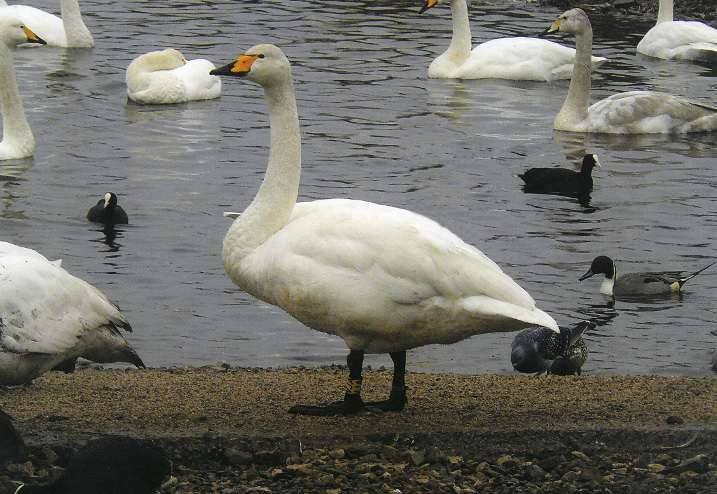 Virginia
Virginia
We have one swan in particular that we’re all looking out for. She’s our superswan, a swan named Virginia. We’ve been following her since the year after she was ringed here – that’s over 20 years. We think she’s 26 years old. She hasn’t arrived yet but it’s early days. Sometimes she doesn’t appear until after Christmas. It’s not unusual. She has also been seen at Welney. She was caught and ringed as an adult so we don’t know her exact age. She’s quite a star. She turns up unexpectedly. You’ll be packing up late in the afternoon and she’ll suddenly show up. You think: ‘where the heck have you been?’ Sigrunn is another famous visitor who was first ringed in December 2002. His ring cracked in 2010 so they replaced it and let me keep the old one.
Another favourite was a bird called Marty. He was one of the reasons that I got into this. I’d seen him at Caelaverock where he was ringed. He had a partner called Merrytown who had been ringed at Martine Mere. I remember seeing him here in 1997 and the following year I visited Caerlaverock and lo and behold, he came out of the water. They knew him well. A week later I saw him at Martin Mere. When they first started ringing birds here, he was one of the few birds they could recognise without a ring. He was a big bird with a distinctive look. You couldn’t miss him. He flew into a pylon and died in Iceland so that was very sad. I think he would have probably been in his early twenties. He was quite an age when we started noticing him.
There was a swan called Ainsdale that we adopted. Quite a few people adopted her. She was one of those birds that you could guarantee you’d see. You can’t always say that. There used to be a couple from Yorkshire that only came here twice a year and they would ask me to point her out so that they could take a photo.
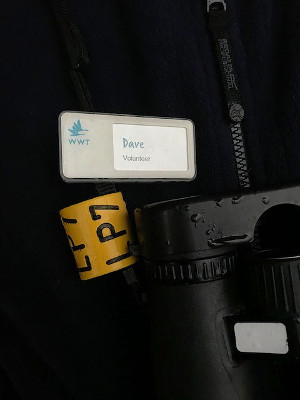
One of the main things that I have learned is that there are so many other people involved in this. We can remember Kane Brides (WWT’s Monitoring Officer) coming here as schoolboy. We’ve seen him grow into the man he is now. We’ve learnt a lot from him and he’s learnt a lot from us.
I love meeting people and chatting to visitors who show a genuine interest in the migrating swans, especially young people. The number of young people that get involved in it is really impressive. We have a young girl whose parents bought her a decent pair of binoculars and she comes and does ring-reading. I think she must be about six or seven now. She’s not the only one. Lots of other children show a keen interest in the migrations of birds.
The older visitors also show an interest. It’s surprising. We used to holiday a lot in Scotland and someone would stop us and say ‘you volunteer at Martin Mere’. It’s been a very enjoyable twenty years. It’s not just about the wildlife, the wildlife connects you to other people.
We’ve seen a lot of changes here. We’ve seen the reserve grow bigger. People come and go. The guy that got us into this retired years ago although we still swap Christmas cards. Everyone has been wonderful. We’ve loved every minute of this.
Being invited to catches is quite something. Our local news BBC North West Tonight got involved. We fitted tracking devices to some swans and they wanted to name two of them after the two male presenters. They had a competition to see which bird would reach Iceland first. They were very privileged to be allowed to film.
I think people would be surprised by how efficient we are at managing wild birds. Humans are potential enemies to them yet we ring and monitor these animals that fly thousands of miles from remote locations in the far north without much issue.
My role is important because the more we know about wildfowl the better we can look after them. The successes of ringing and catching birds means we know where they’re going, what route they’re taking, where they’re stopping off so we know where we can help out if there is a problem on the way. We can tell if the birds are healthy. If they started showing up overweight or underweight then we would want to know why. I think it’s very important that we continue this research work because it benefits the birds.
Every year is different. What happens in one year, doesn’t happen the next.
This place – the whole WWT - is a charity. This duckery behind me is called the WG Harvey Duckery. He was born in my hometown of Bury in Lancashire and his family had a tannery there. They used to take the skin from animals and convert it into material. He left a lot of money to Martin Mere – he left us a legacy. Without people like that and donations from any source, wills, membership, adopting, support from funders like Postcode Animal Trust, a grant-giving charity funded by players of People’s Postcode Lottery, obviously helps to keep the place going.
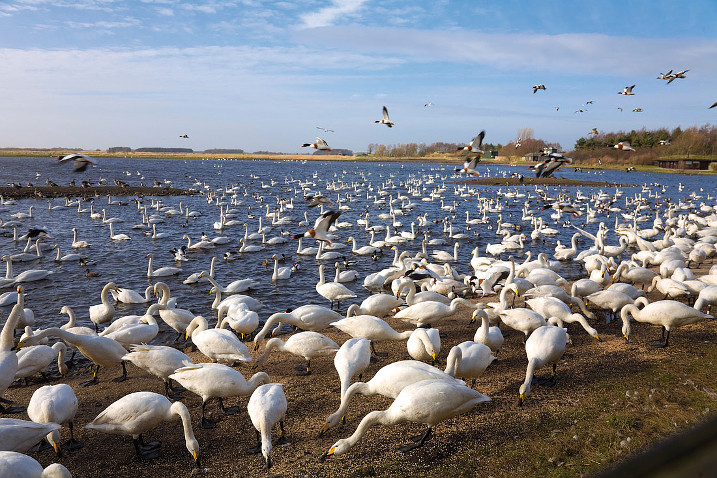
You don’t realise that people are members for totally different reasons. One day, I was in the playground with my grandchildren on a lovely afternoon and sat next to me were two young ladies with small children. A flock of whooper swans flew over our heads and this lady said to me: ‘Where are they going?’ I told her they were heading for the Mere. Turned out that they were members who lived in Southport and they have never been around the grounds, never seen the Mere. The only reason they were members was because the playground was safe and there was a nice café and shop. They’d been members for over two years. I suggested that they walk around the reserve and see the birds. The next time I saw her she said she had took my advice. No one would believe me.
When the kids flew the nest, we sat down and decided that we need to do something together. We took up hillwalking and bought binoculars. We started seeing birds and wondering what was what. It was ballroom or birds, and we chose birds.
I used to love seeing the list of birds with the observers marked against them. We had a code and ours was DEW – Dave and Estelle Walsh. They used to put a question mark beside our sightings as we were beginners. Eventually that question mark disappeared.
I could give you a boot-full of funny stories. I was in the Swan Link hide - at one point thought to be the largest hide in Europe – and someone asked how the swans got here. One lady replied that we heard them all into a giant aircraft and fly them over from Iceland.
People will say: ‘I have a silly question’ but I always tell them there’s no such thing. I’ll always try to answer. Kids ask some of the best and most profound questions. They’re our future. Last year we had a young lad called Jack. He started as a volunteer when he was 16. His real interest was the wild side of the reserve. My wife started mentoring him and he spent all winter with her. He’s now at Bangor University studying conservation. He’ll be another Kane.
If you love wildlife, being outdoors and sharing your passion for nature, why not have a look at some of WWT's volunteer roles?
